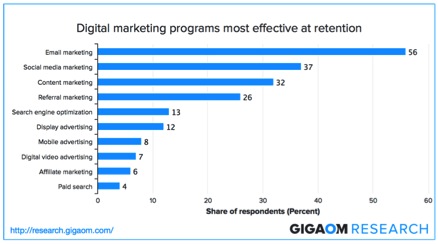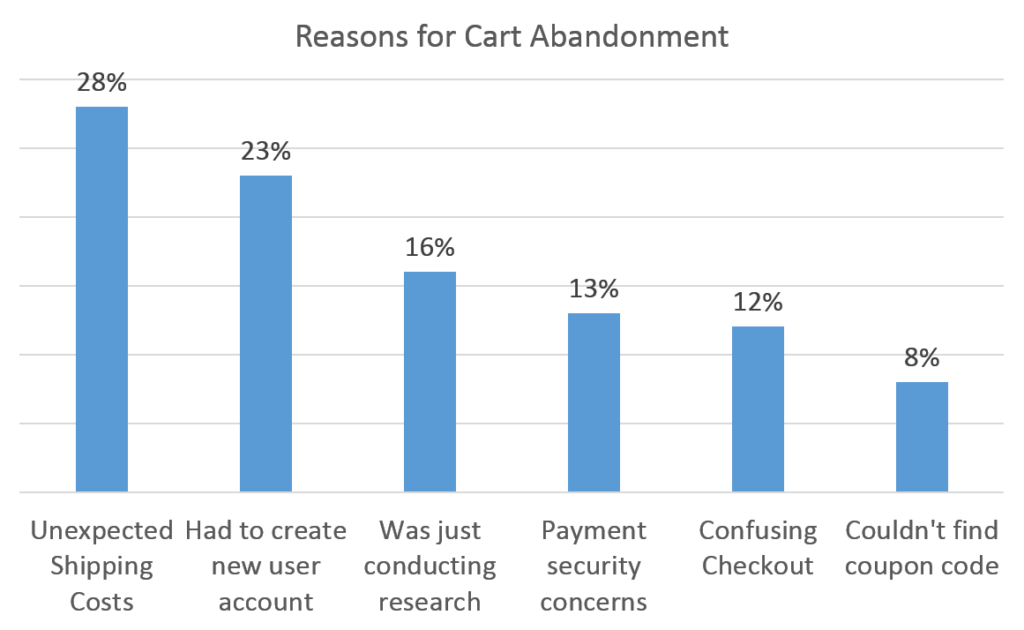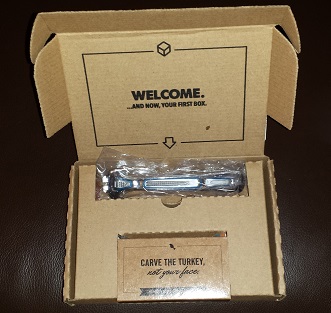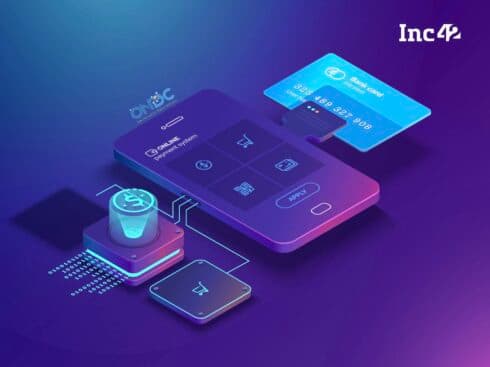There is only one boss – the customer. And he can fire everybody in the company, from the chairman on down, simply by spending his money somewhere else. — Sam Walton
Today, customers can make or break any ecommerce giant, deciding the fate of every ecommerce venture. A smooth-sailing customer journey from acquisition and on-boarding through retention, up-selling, and cross-selling up to customer loyalty is every ecommerce business’s dream come true. However, amidst intense competition, this journey is an adventure, even at its best moments.
Multiple studies and observations confirm that return customers bring in much more revenue than the first-time shoppers and that the quality per purchase is as relevant as the frequency of purchase. According to a study by SumAll, repeat customer sales account for 25–40% of the total sales from the best customers and that, after making a second purchase, the likelihood of a third purchase increases to 45%, and so on. RJMetrics reports that your best customers, your heroes, spend up to thirty times more than the average customer does. Hence, the current focus is on determining the customers’ lifetime value and building a long-term relationship with them, taking them from one stage of the customer lifecycle to the other, building trust at every stage, and showering personalized attention on them.
How is customer lifecycle management (CLM) in an ecommerce business unique?
What is the X factor that is scaling up CLM solutions beyond imagination for the online world? The buzzword is “big data”- and its infinite applications in the ecommerce business, right from directing web traffic, controlling site design, and personalized customer engagement to providing cognitive and predictive intelligence to ecommerce business owners. Data is indeed the largest asset of any eCommerce business. However, the challenge is in streamlining millions of data points, harnessing structured and unstructured data to generate value for the business, and achieving customer engagement at every stage of the lifecycle.
Let’s see if we can simplify our understanding of how data-driven solutions add value to CLM at each stage (acquisition, on-boarding, retention, and loyalty) of an ecommerce business.
Acquisition
Goal: To engage with the customer to create awareness and garner interest in your business; this is the first stage of trust – reaching out and connecting with your prospects
Customer touch point examples: Content marketing to create awareness about the product through articles, sites and blogs, social media interaction, SEO marketing, videos, email marketing, telemarketing, affiliate programs, behavioral targeting of audience with online ads, and so on; this list is long with many interesting approaches
Buzzword: Viral marketing – especially if your product or site has scope with this approach
Example: Dollar Shave Club is a perfect example of viral marketing through video, which grabbed many million eyeballs and rocketed its market value sky high. Its $1-a-month subscription package and the offbeat video gave it the immense thrust that any dream launch cannot even think of. Within a couple of days of the video going online, the site had more than 10,000 signups!
How can data help at this stage?
- Structured and unstructured data from this stage can be tweaked to obtain a wealth of patterns: successful campaigns, A/B testing responses, keywords popular with the target audience, click rate, site traffic, time spent on site, action taken after being exposed to a marketing campaign, and many other data points. The data can be segmented further to determine
- the most active percentage of your target audience
- whether any demographic, geographic, or other pattern can be derived from the response
- site functionality – what works and what does not
- campaign effectiveness
- Data gathered from this stage can help create further customized approaches for specific segments within your target audience as the data you have collected reveals definite patterns.
On-boarding
Goal: To create a mesmerizing initial experience for customers, making them comfortable and encouraging them subliminally to make their first purchase
Customer touch point examples: personalized emails, special discount offers (e.g., free shipping, early bird offers, time-bound offers, special coupons, etc.), customized landing pages encouraging customer engagement, customer interaction points within the site (e.g., providing reviews and comments), prompt response channels for queries and feedback, remarketing approaches, and options of obtaining detailed customer information (e.g., prompting the customer to create an account on the site)
Buzzwords: Value creation, customer behavior analysis, rolling out the red carpet
Example: Birchbox is a great success story in this category. It offers regular home deliveries of grooming samples that match the customers’ choice – as indicated in their profile – at a minimal subscription rate. This happens the moment they subscribe on the site. They then seek the customer’s feedback and route it back to the clients. The customers can combine their personal experience from using the samples with reviews from other users before deciding to buy the product. The first-time experience on this site is remarkable, with great design, clear segments of information, and fantastic customer engagement. It’s not surprising that Birchbox has become one of the leading beauty and grooming retailers within 5 years.
How can data help at this stage?
- Data from this stage is valuable in determining conversion rates – an important metric to measure online success.
- Both quantitative and qualitative data (e.g., frequency of visit, click pattern during visit, common search parameters used, common pages visited, discussions on social media about the site, social interaction within the site, etc.) can be segmented to assess the level of personalized interaction that would have to be planned with the customer.
- Data patterns from this stage can also be used to assess the customer’s initial impression of site’s design and also provides an opportunity to optimize the site as required: easy navigation, page loading time, transparency of information (e.g., contact details, privacy policy information, product delivery details, shipping information), live chat options, aesthetic design, ease of product discovery, product page organization, and other essential site elements.
- This data is also valuable in assessing the effectiveness of your call-to-action buttons, offers and discounts, how-to guides, FAQs, and packages.
Retention & Loyalty
Goal: This stage requires the longest and deepest level of client engagement, with extensive scope for personalization. Adobe’s Digital Index Report shows that 41% of online revenue of an ecommerce business usually comes from repeat and returning purchasers. With truckloads of data available at this stage of customer lifecycle, just figure out the extensive options you have to scale up in this area.
There are three goals at this stage:
- Identifying your repeat customers, determining their frequency and value of purchase, and adopting personalized means of retaining them, with a special focus on your “hero customers”
- Minimizing churn: it is easier to prevent customers from churning than focusing energy on winning them back or gaining new customers
- Encouraging customer referrals, an often-ignored but powerful tool
Customer touch point examples: This stage has a million customer touch points and infinite data points. To cite a few examples:
- Intuitive product discovery and search using previous search history patterns are common ecommerce site features, but ecommerce businesses are fine-tuning their product discoverability and taxonomy, as well as experimenting with concepts of making themes and topics discoverable through broad information search queries from who are “not sure what they’re looking for”.
- Personalized post-purchase customer engagement provides an element of surprise to the customer and opens up opportunities for subtle up-selling.
- We live in an era of flash sales, festive discounts, and limited-window sales, especially with the festive season round the corner. Such bonuses are a sure way of retaining your customers, but ensure that you provide sticky deals that bring these customers back even without the bonus. For example, Snapdeal, like many other retail ecommerce sites, is hosting a killer discount sale this month. They indicate that a huge percentage of the new customers they gain during this period join Snapdeal’s long-term customer base.
- Site optimization based on behavior history andresponse from previous customers who liked or disliked any feature provides customized variance that is tailor-made to their requirements.
- Referral marketing is definitely one of the most preferred approaches to expand your ecommerce business. Everyone loves a recommendation – the opinion of a trusted person!
- Many ecommerce businesses work on creating customer communities that make a difference by championing a social cause or focusing on general well-being. TOMS shoes is a great example – their tagline says “each pair of shoes you purchase = a pair of shoes for a child in need”. The social impact of this program has been tremendous.
Gigaom’s 2014 report summarizes the digital marketing programs that are effective at the retention stage:

Buzzword: Data segmentation and personalized marketing, customer review analysis, building a customer community, customer referral programs, customer community engagement
Example: Gilt uses a well-worded referral program right on its landing page, encouraging customers to introduce their “shopping buddies” to Gilt and enjoy $25 credit for every referred person who joins and purchases from the site. This site has other amazing features: the greater your interaction in the site, the more rewards you gain.
How can data help at this stage?
- The data at this stage can get unmanageable if not segmented with care. The priority order of focus areas have to be chosen with care before proceeding with personalization of data.
- The data can be used to categorize customers into pockets; for example
- Customers who are at the risk of becoming inactive – based on purchase pattern
- Inactive customers
- Active customers, who visit your site and display a healthy level of engagement
- Hero customers, your key customers in terms of value per spend, number of visits, and frequency of purchase. This is the focus group where personalization should be at its best.
- Negative experience customers, who have been active but have provided a negative feedback and are running the risk of leaving because of the experience – your next focus
- Cart abandoning customers, who decide to drop out of a purchase in the last moment – this group can have lasting implications on your business.
Statistics provide common reasons for this decision:

Conclusion
At every stage of a customer’s lifecycle within an ecommerce business, data (both qualitative and quantitative) provide us with insights – answers to what, why, how, and when. All these data points can be segmented in a customized manner to achieve relevant data portions. These segmented data can then be analyzed and used for creating personalized customer engagement, optimizing site design, achieving transparent delivery and support logistics, and delivering intuitive and predictive marketing solutions for the ecommerce business. Data is definitely the kingmaker of the ecommerce world.
Download an interesting research on what works (and what doesn’t) in email marketing for ecommerce by TargetingMantra.


































 Ad-lite browsing experience
Ad-lite browsing experience